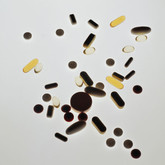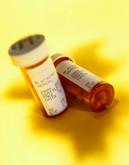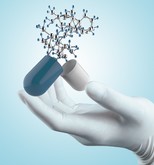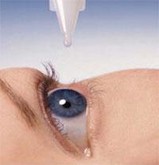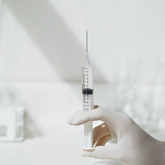Generics
EMA recommends approval of abiraterone and thiotepa generics
In January and February 2021, the European Medicines Agency’s (EMA) Committee for Medicinal Products for Human Use (CHMP) held meetings that led to positive opinions towards the recommendation for approval of two generics, Abiraterone Accord (abiraterone) and Thiotepa Riemser (thiotepa).
Teva and Sandoz launch new generics
In early 2021, Teva Pharmaceuticals announced the US launch of generic versions of NuvaRing® and AZOPT®. During the same period, Sandoz launched its version of Firazyr.
EMA recommends approval of fourth COVID-19 vaccine
11 March 2021 saw the European Medicines Agency (EMA) recommended granting a conditional marketing authorisation for the fourth COVID-19 vaccine. After a thorough evaluation, EMA’s Committee for Medicinal Products for Human Use (CHMP) concluded that data on the Janssen vaccine were robust and met the criteria for efficacy, safety and quality.
Debate about generic versus brand-name drugs for glaucoma
Glaucoma is a chronic, largely asymptomatic disease that often needs lifelong treatment. The choice of drugs is extremely important as the cost of drugs; side effects and efficacy often affect compliance and adherence to therapy. For a given class of drug, there are three options including brand-name drugs, generics and branded generics. Brand-name drugs are costlier compared to generics and branded generics because they are originator molecules developed by a company after many years of research and come into the market with a patent. Whereas branded generics are produced by a different company once the patent of the originator company expires. Moreover, competition amongst different companies to make the similar formulation of branded generics further reduces the cost.
Posaconazole, silodosin and droxidopa generics from Lupin and Sandoz
Early 2021 saw the launch of two generic versions of posaconazole in Canada and the US. In Canada, the first generic version of the drug was launched by pharmaceutical manufacturer Sandoz Canada on 26 January 2021, along with a generic version of silodosin. These launches were followed by the launch of Lupin’s generic posaconazole in the US in mid-February 2021. During the same period, Lupin also announced the US approval of its generic droxidopa capsules [3].
The role of authorized generics in improving access to medicines
In recent years, many authorized generic drug products have been launched by pharmaceutical companies at lower prices than their brand-name originators. A recent viewpoint, published in JAMA Internal Medicine [1], discusses the ways that authorized generics are launched in the US. It also considers whether these products improve lower costs and access to medicines.
Opportunities for generics with Korean patent expires in 2021
As part of ongoing action to improve the quality of generics and ensure an efficient and competitive generics market, the Korean Ministry of Food and Drug Safety (MFDS) announced that 158 patents for pharmaceutical products will expire in 2021.
Approving generics of polymer-based parenteral long-acting drugs
To assure the safety and the efficacy of drugs, quality and batch-to-batch reproducibility need to be guaranteed. In the case of parenteral long-acting products, the regulatory authorities in the European Union (EU) and the US deviate in their guidance, differences include how to define such products and in vitro release assays.
AIFA updates the Transparency Lists for generics
The Italian Medicines Agency (Agenzia Italiana del Farmaco, AIFA) announced on 15 January 2021 the update of its Transparency Lists (liste di trasparenza).
Adherence improves long-term prognosis and medical costs in Japan
Medical costs and the burden associated with cardiovascular disease are on the rise. In Japan, due to changes in lifestyle and other factors, the number of inpatients with cardiovascular disease and other conditions is increasing at a rate of 10,000 per year.
